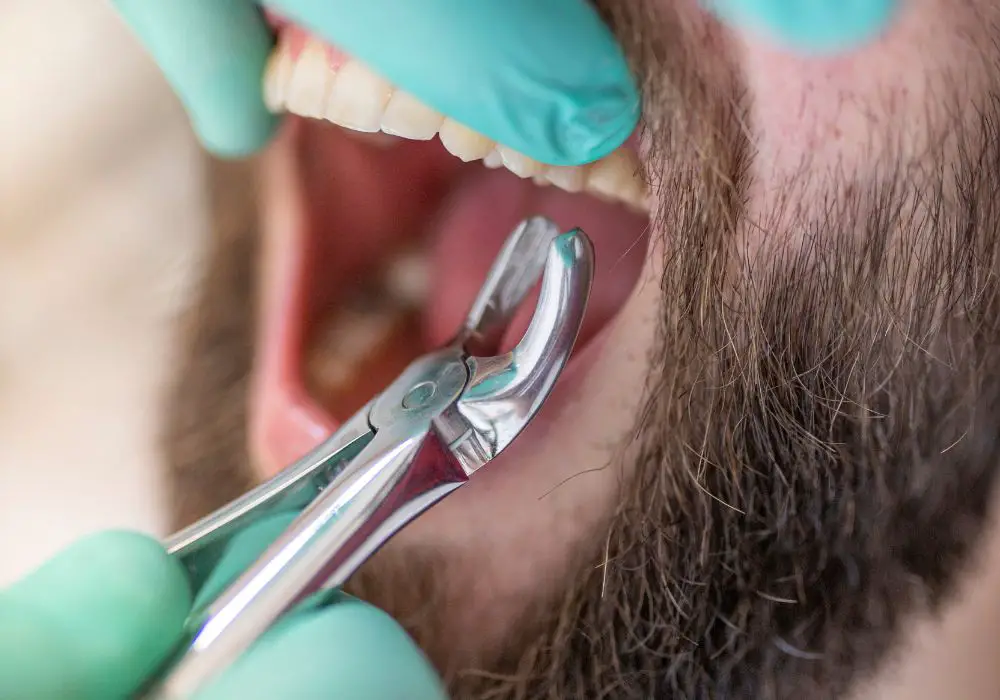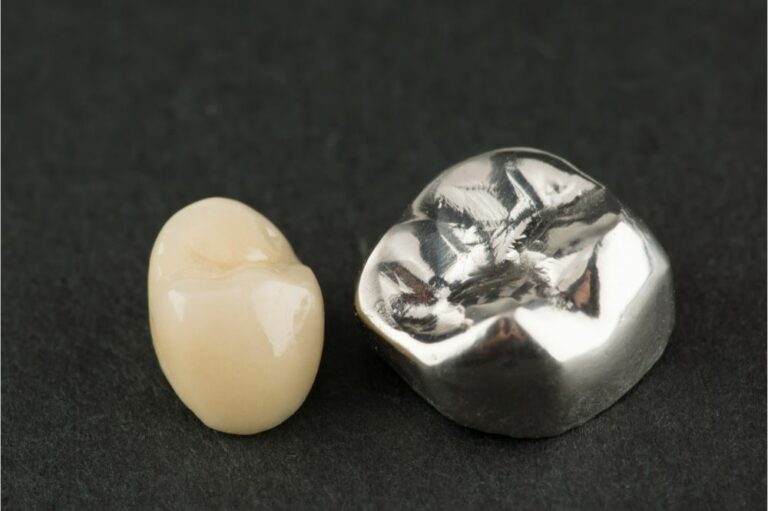Dentists remove the nerve in a tooth through a procedure called a root canal. This treatment is necessary when the nerve or pulp tissue inside the tooth becomes infected or inflamed. The nerve removal is done to prevent further damage to the tooth and surrounding tissues, as well as to alleviate pain and discomfort.
The tooth nerve, also known as the pulp, contains blood vessels, connective tissues, and nerves that provide sensation to the tooth. When the pulp becomes damaged or infected, it can cause severe pain, sensitivity to hot and cold temperatures, and swelling. If left untreated, the infection can spread to the surrounding tissues and cause more serious problems.
Understanding the reasons for removing the tooth nerve, the procedure of nerve removal, and the aftercare and recovery process is essential for anyone undergoing a root canal. It is also important to be aware of potential risks and complications associated with the treatment. In this article, we will explore these topics and answer some frequently asked questions about why dentists remove the nerve in a tooth.
Key Takeaways
- Dentists remove the nerve in a tooth through a procedure called a root canal to prevent further damage and alleviate pain.
- The tooth nerve, or pulp, can become infected or inflamed, causing severe pain and sensitivity.
- Understanding the reasons for nerve removal, the procedure, and aftercare is important for anyone undergoing a root canal.
Understanding Tooth Nerve

The tooth nerve, also known as the dental pulp, is the soft tissue located in the center of the tooth. It contains nerves, blood vessels, and connective tissue. The tooth nerve plays a crucial role during the development of teeth, but once teeth are fully developed, it can be removed without affecting the function of the tooth.
The tooth nerve can become damaged or infected due to trauma, decay, or gum disease. When this happens, the nerve can cause severe pain and sensitivity. In some cases, the nerve may die, leading to the loss of sensation in the tooth.
Dentists remove the nerve in a tooth to alleviate pain and prevent further damage. This procedure is called a root canal, and it involves removing the damaged or infected nerve tissue from the tooth and filling the space with a material called gutta-percha.
Overall, removing the nerve in a tooth is a common dental procedure that can save a damaged or infected tooth from extraction. If you are experiencing tooth pain or sensitivity, it is important to consult with a dentist to determine the best course of treatment.
Reasons for Removing Tooth Nerve
When a tooth nerve becomes damaged or infected, a dentist may recommend removing it. Here are some common reasons why a dentist may suggest removing a tooth nerve:
Severe Tooth Decay
Tooth decay is a common cause of nerve damage. When bacteria produce acids that eat into the tooth enamel, a cavity can form. If left untreated, the decay can spread to the pulp of the tooth, which contains the nerve. This can cause pain, swelling, and infection. In some cases, a root canal procedure may be needed to remove the infected nerve and save the tooth.
Trauma to the Tooth
Trauma to the tooth, such as a blow to the face, can also damage the nerve. This can cause pain, sensitivity, and swelling. If the nerve is severely damaged, it may need to be removed. In some cases, a tooth extraction may be necessary.
Tooth Infection
A tooth infection can occur when bacteria enter the tooth through a crack or cavity. This can cause the nerve to become inflamed and infected. Symptoms of a tooth infection may include pain, swelling, and sensitivity to hot or cold temperatures. If left untreated, the infection can spread to other parts of the body. In some cases, a root canal procedure may be needed to remove the infected nerve and prevent the infection from spreading.
In summary, severe tooth decay, trauma to the tooth, and tooth infection are common reasons why a dentist may recommend removing a tooth nerve. If you are experiencing any symptoms of nerve damage, it is important to see a dentist as soon as possible. They can evaluate your condition and recommend the best course of treatment.
Procedure of Nerve Removal

Root Canal Procedure
Root canal therapy is a common procedure used to remove the nerve from a tooth. The treatment is typically done when the pulp, which is composed of nerves and blood vessels, becomes infected or inflamed. The procedure involves removing the infected or inflamed pulp, cleaning and shaping the root canal, and then filling and sealing the canal with a material called gutta-percha.
The root canal procedure is usually done in two or more appointments. During the first appointment, the dentist will numb the area around the tooth and create an opening in the crown of the tooth to access the pulp chamber. They will then use special instruments to remove the infected or inflamed pulp and shape the root canal. The dentist may also place medication in the canal to help clear up any remaining infection.
In the following appointment, the dentist will fill the canal with gutta-percha and seal the opening in the tooth with a filling or crown. The tooth may also need a post and core restoration to provide additional support.
Pulpotomy Procedure
A pulpotomy is a procedure that is typically done on baby teeth when the pulp in the crown of the tooth is infected or damaged but the root is still healthy. The procedure involves removing the infected or damaged pulp and placing a medication on the remaining healthy pulp to help it heal.
During the procedure, the dentist will numb the area around the tooth and create an opening in the crown of the tooth to access the pulp chamber. They will then remove the infected or damaged pulp and place a medication on the remaining healthy pulp. The dentist will then place a filling or crown on the tooth to protect it.
It is important to note that a pulpotomy is only done on baby teeth. If an adult tooth has an infected or damaged pulp, a root canal procedure will be necessary to save the tooth.
Overall, both the root canal and pulpotomy procedures are effective ways to remove the nerve from a tooth and save it from extraction. It is important to speak with your dentist if you are experiencing tooth pain or sensitivity to determine the best course of treatment for your individual case.
Aftercare and Recovery
Pain Management
After a tooth nerve removal, it is common to experience some pain and discomfort. Your dentist will recommend pain medication to help manage the pain. Over-the-counter painkillers such as ibuprofen or acetaminophen are usually sufficient, but in some cases, your dentist may prescribe a stronger pain medication.
It is important to follow the recommended dosage and not to exceed the maximum daily limit. If the pain persists or worsens, contact your dentist immediately.
Oral Hygiene Practices
After a tooth nerve removal, it is important to maintain good oral hygiene to prevent infection and promote healing. Here are some oral hygiene practices to follow:
- Brush your teeth gently twice a day with a soft-bristled toothbrush.
- Use an antiseptic mouthwash to kill bacteria and promote healing.
- Avoid smoking and alcohol as they can delay healing and increase the risk of infection.
- Avoid hard and crunchy foods that can irritate the extraction site.
- Eat soft foods such as mashed potatoes, soups, and smoothies for the first few days after the procedure.
Your dentist may also recommend a follow-up appointment to monitor the healing process and remove any stitches if necessary.
By following these aftercare and recovery practices, you can help ensure a smooth and successful recovery after a tooth nerve removal.
Potential Risks and Complications

Infection
There is a risk of infection after a root canal procedure. The dentist will prescribe antibiotics to prevent and treat any infection that may occur. It is important to follow the dentist’s instructions for taking the antibiotics to ensure that the infection is treated effectively.
If an infection does occur, it can cause pain, swelling, and other symptoms. In rare cases, the infection can spread to other parts of the body and cause serious health problems. It is important to contact the dentist immediately if you experience any symptoms of infection after a root canal procedure.
Tooth Discoloration
Tooth discoloration is another potential complication of a root canal procedure. The tooth may become discolored if the nerve and blood vessels that supply it with nutrients are removed. This can result in a gray or yellowish tint to the tooth.
To prevent tooth discoloration, the dentist may recommend placing a crown or other restoration on the tooth after the root canal procedure. This can help to protect the tooth and improve its appearance. If tooth discoloration does occur, there are several options for treatment, including teeth whitening or the placement of a veneer or crown.
Overall, the risks and complications of a root canal procedure are relatively low. With proper care and follow-up, most patients can expect to recover fully and enjoy improved dental health.
Frequently Asked Questions
What is the purpose of removing the nerve in a tooth?
The main purpose of removing the nerve in a tooth is to eliminate the source of pain caused by an infected or damaged tooth. The nerve, or pulp, can become inflamed or infected due to decay, trauma, or other factors. Removing the nerve can relieve pain and prevent the spread of infection.
Does removing the nerve in a tooth hurt?
The procedure to remove the nerve in a tooth is typically performed under local anesthesia, so you should not feel any pain during the procedure. However, you may experience some discomfort or sensitivity after the procedure as your tooth heals.
How much does it cost to remove a tooth nerve?
The cost of removing a tooth nerve can vary depending on several factors, including the location of the tooth, the extent of the damage, and the dentist or endodontist performing the procedure. On average, the cost can range from $500 to $1500 per tooth.
Can a tooth still function without a nerve?
Yes, a tooth can still function without a nerve. The nerve provides sensation to the tooth, but it is not necessary for the tooth to function properly. However, removing the nerve can make the tooth more brittle and prone to fracture, so it is important to protect the tooth with a crown or other restoration.
What does a tooth nerve look like?
The tooth nerve, or pulp, is a soft tissue that is located in the center of the tooth. It contains blood vessels, nerves, and connective tissue. The nerve is surrounded by the dentin, which is covered by the enamel on the outside of the tooth.
Why is the nerve removed during a root canal procedure?
The nerve is removed during a root canal procedure to eliminate the source of pain and infection in the tooth. The procedure involves removing the infected or damaged nerve, cleaning and disinfecting the inside of the tooth, and filling the space with a material to prevent further infection. The tooth can then be restored with a crown or other restoration to protect it from further damage.







